The Power of Song
Singing together,
working together,
making a better world
for everyone.
This machine surrounds hate and forces it to surrender.
Pete lived his teenage years during the Great Depression, when so many people were out of work, homeless and hungry. He wanted to become a journalist and report on the lives of ordinary people struggling in difficult times. Pete learned songs about hard working people trying make a change for the better in their lives. He came to believe that these folk songs could tell people's stories even better than most newspaper articles.
Songs spread the news about what was really happening across the country. They lifted the spirits of folks who shared a common experience. When people were able to gather and sing together their individual strengths could unite into one big voice.
Alan Lomax and the Archive of American Folk Music
In 1939 Pete got a job in Washington D.C. working with Alan Lomax at the Archive of American Folk Music in the Library of Congress. He helped Mr. Lomax organize a growing collection of music recordings–songs by Black country and blues musicians, mountain folk tunes, cowboy songs and more.
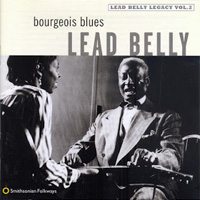
The sound of Lead Belly's 12-string guitar
In 1940 Alan Lomax invited Huddie Ledbetter, a Black man from Mississippi and Texas, better known as "Lead Belly", to record some of his songs and perform on the radio show Alan helped produce. Jim Crow laws still ruled over Washington, D.C., requiring residents to remain racially segragated. After performing, Lead Belly got together with a group of black and white friends to celebrate, but they were kicked out of their hotel. "Whites and blacks together in the same hotel room are not allowed!"
Songs, Pete knew, had the power to help end mistrust between black people and white people. Alan Lomax invited 21-year-old Pete to perform on his radio show and broadcast Pete's voice and his banjo nationwide.
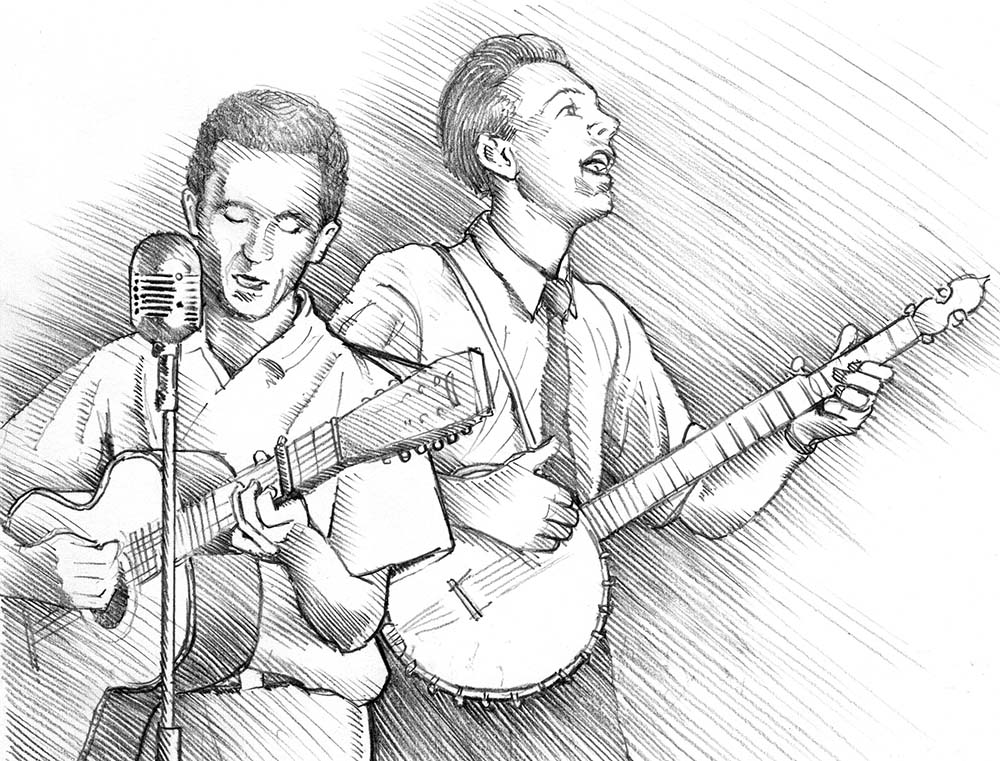
Woody Gutherie and Pete Seeger collect union songs.
That same year Pete met the amazing songwriter Woody Gutherie. Woody became a frequent performer on Alan Lomax's radio show. Woody and Pete soon were traveling together around the United States tracking down and recording old labor union songs. Back in the late 1800s when workers organized their first labor unions, they often sang together. By the 1940s many of these old union songs were becoming lost and forgotten. Pete and Woody visited union halls around the county teaching younger workers the very songs their grandparents had sung many years before.

Lee Hays and Pete Seeger form the Almanac Singers.
Pete and his song writing partner, Lee Hays (not related to artist Michael Hays), formed a group called the Almanac Singers. Woody sang and played with them on their recordings. Woody wrote so many popular songs–including "This Land Is Your Land". He wrote many of his songs just for children. Pete began to include these songs in his own performances and helped "This Land Is Your Land" become one of the best known songs in America.
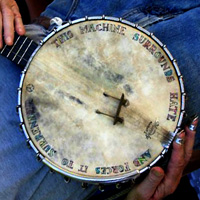
Woody inspired Pete to write this message on his banjo:
"THIS MACHINE SURROUNDS HATE AND FORCES IT TO SURRENDER."
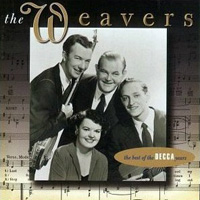
If I Had a Hammer
Listen to the song on Pete's audio CD "If I had a Hammer: Songs of Hope and Struggle".
In 1948 Pete and Lee Hays re-organized their music group and renamed themselves The Weavers. They had big nationwide hit recording a Lead Belly song, "Goodnight Irene". Pete and Lee Hays wrote lots of songs together. Listen to their song called "If I Had a Hammer". You might at first think it's about a hammer, a bell and a song. You have to wait until the end of the song to understand it's about justice, freedom and love. Lee called it a "zipper" song. That's when each verse is the same except for a single word or phrase which changes from one verse to the next.
The Weavers also performed the South African song, Wimoweh (The Lion Sleeps Tonight), for an American audience before any other group.
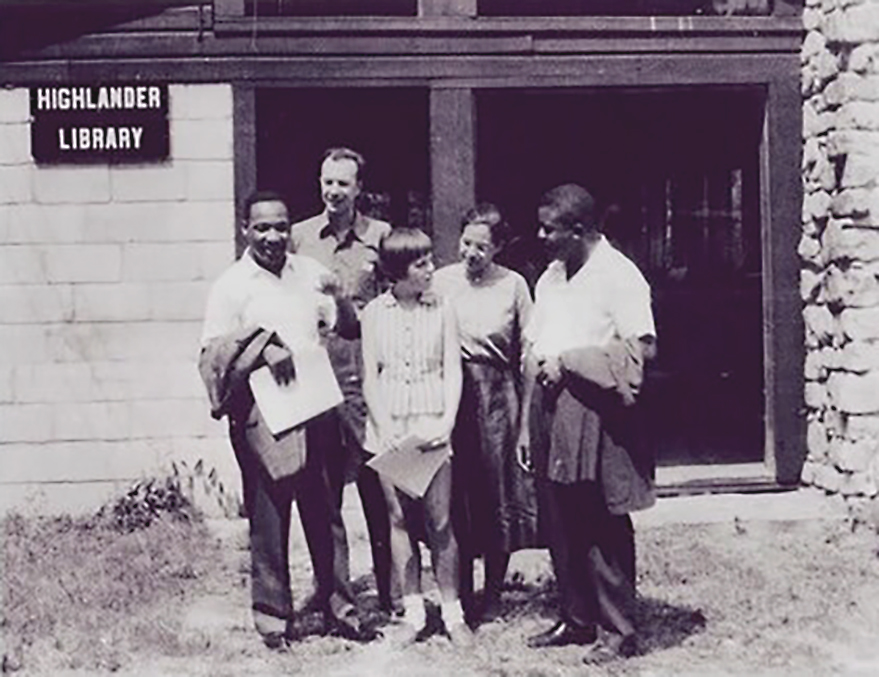
If You Miss Me at the Back of the Bus
Listen to this song on Pete's audio CD "We Shall Overcome: The Complete Carnegie Hall Concert".
At the Highlander Folk School in Tennesee, Pete shared songs with other social activists who wanted to confront hate and work together to insure justice for all. This school helped Rosa Parks plan the day she would violate Jim Crow laws and take a seat at the front of the bus. Rosa Parks, Dr. King and Pete Seeger appear together in this 1957 photo at Highlander. Dr. Martin Luther King had come to Highlander to learn about their work.
King heard a performance of the song We Shall Overcome with Pete among the singers on stage. This tune made a big inpression on Dr. King. The song became popular at rallies and demonstrations where brave folks working to end racial segregation and ensure voting rights for Black Americans amplified their message by singing together.
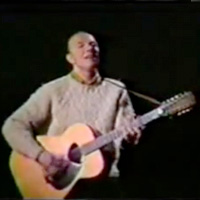
The Big Muddy
Listen to this song on Pete's audio CD "Pete Seeger's Greatest Hits".
Like Dr. King, Pete beleived we must find a way to fight injustice without resorting to hatred and violence. When many Americans thought it was a mistake to fight a war in Viet Nam, Pete sang songs to send the message out that this war was wrong. In 1967 he performed his anti-war song "Waist Deep in the Big Muddy" on The Smothers Brothers TV show, but CBS censors erased it from the broadcast. They thought (correctly) that Pete was actually calling the President of the United States a "BIG FOOL" for prolonging the war. In 1968 more Americans agreed and Pete's performance of this song was finally broadcast.
The next year in Washington D.C., even more people protested the war. They staged a huge rally across from the White House. Pete led a group of 250,000 people (including 13-year-old artist Michael Hays) as they all sang the chorus to John Lennon's song "Give Peace a Chance" for about 20 minutes nonstop.

Sailin' Up Sailin' Down
Listen to this song on Pete's audio CD "Pete Seeger's Family Concert"
The first Earth Day in 1970 refocused Pete on the task of cleaning up the Hudson River. From the house where Pete lived he enjoyed a parnoramic view of this wide waterway as it flows south to New York City. The Hudson river had become so polluted, it was not safe for kids to swim. Pete wanted to stop the common practice of pouring garbage and industrial waste into the river. He built an old style sailing ship called a "sloop". To this day the Sloop Clearwater sails up and down the Hudson River, docking in ports along the way, teaching people how by working together they can make the water safe again. Pete organized lobbying efforts to try and stop big companies like GE from using the Hudson River to turn their toxic industrial waste into someone elses' problem. Pete's efforts eventually reclaimed the health and beauty of the Hudosn River.
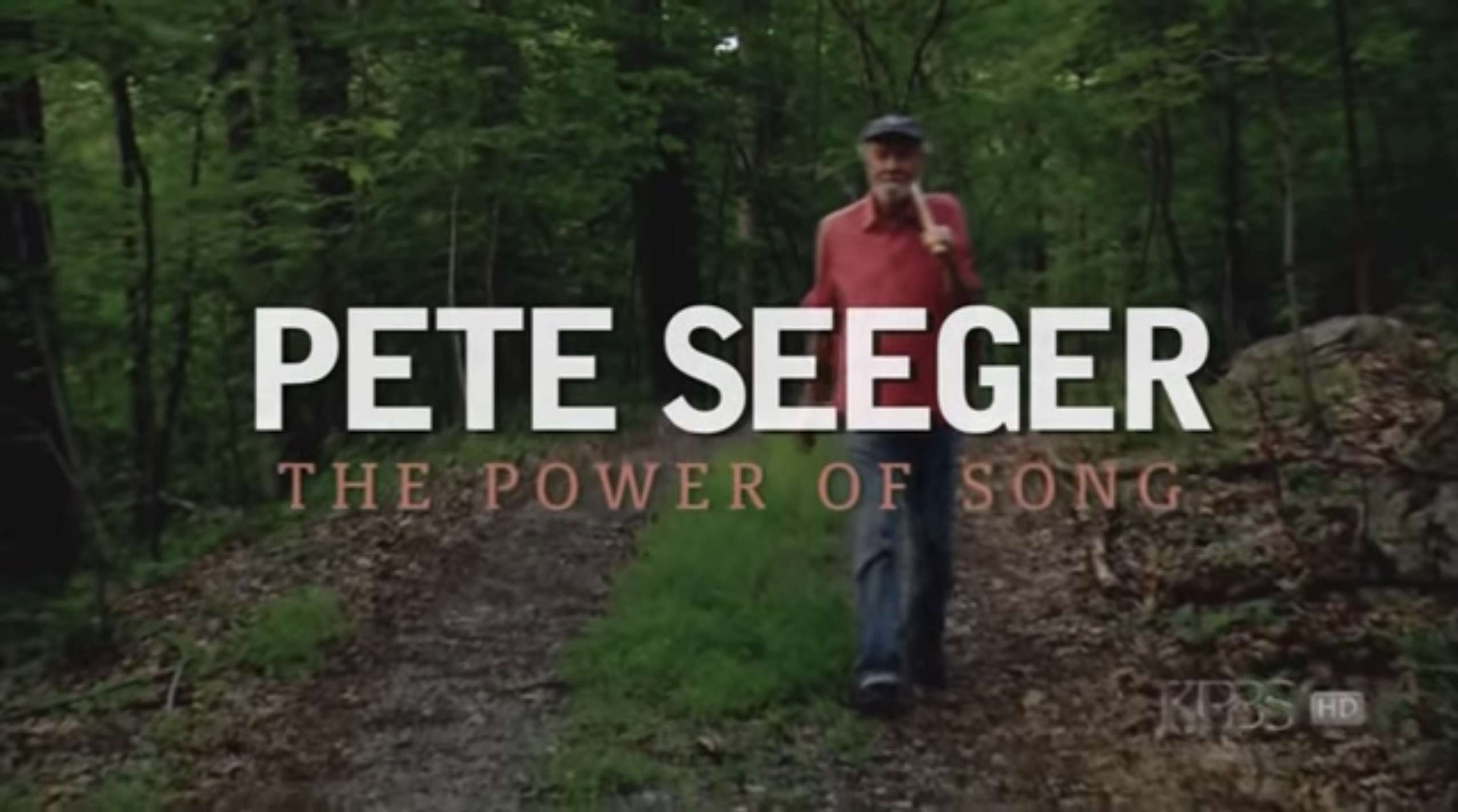 Make some time to view the excellent 2007 documentary film about the Pete's life and times:
Make some time to view the excellent 2007 documentary film about the Pete's life and times:
Pete Seeger - The Power of Song
